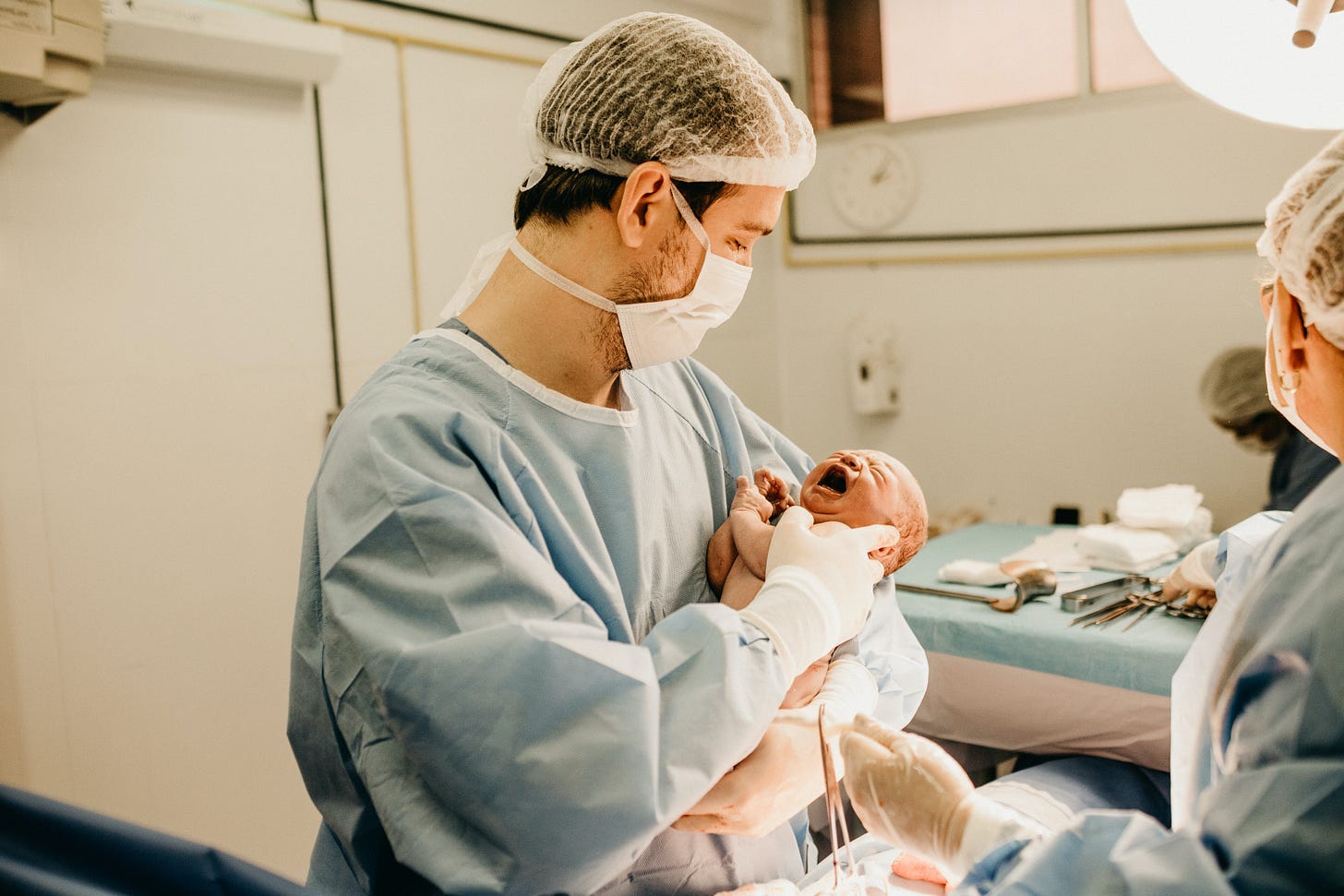Bring forth new life!
The making of fathers and the perils of bringing life into this this world

Father’s Day is this coming weekend, but I will be away at a retreat. Everyone seems fine that I will be gone for a whole week studying Russian literature. Traveling is easier now because my husband and I are in a golden era where all of our children are young enough to be under our roof but old enough to not need constant tending. However, I feel a twinge of guilt being away on Father’s Day.
The day my husband became a father was one of the best moments of my life. My first labor was a dreadful one. I had preeclampsia and for a while I was in peril, but I was able to have my baby: a pink and healthy 8-pound boy. I remember being in an exhausted haze, and the magnesium sulfate coursed through my veins like liquid fire. My baby was cleaned and wrapped and handed to my young husband. And I heard him say,
This is the first person I’ve ever known that I am related to.
My husband is adopted, and to this day the only blood relatives he knows are the ones I have brought forth through my own humble body. Motherhood has been such a profound gift because of the blessing it has been to the good man I married. To know one’s family is a special anchoring point to this temporal existence.
And on the topic of difficult labors, this week I read a Substack entry by
, a woman I admire and to whom I have linked previously regarding her extremely helpful videos. I met her in Dallas this past fall at the Catholic Imagination Conference which she helped organize.Last week Jessica almost died while giving birth to her fourth child. (An experience very much not like my fourth child.) In her harrowing post, she references a horrific scene in the novel Laurus, the book I chose to reread for Lent (and which she had mentioned in her own book The Scandal of Holiness). That event in Laurus is one of the only literary scenes where I can only skim the details and won’t dwell too long on the actual passage.
She also shares a haunting image of a statue depicting Lady Elizabeth and Joseph Nightingale. In the picture you see a terrified husband trying to drive away a personified Death’s spear that is aimed toward his doomed wife.
Elizabeth died on 17th August 1731 following a premature birth caused by the shock of a violent flash of lightning. This child, also called Elizabeth, survived and later married Wilmot Vaughan, 1st Earl of Lisburne and died (also in childbirth) in 1755.
What a tragic coda for the second Elizabeth. This is a stark reminder of how motherhood is never without danger and is, therefore, an act of profound trust and faith.
Living in these modern times and in one of the wealthiest and most technologically advanced countries does not make Americans immune to this type of mortality. In 2021, the most recent year for which we have reliable data, 1,205 women died of maternal causes1 in the US.
In fact, you could be a 32-year-old Gold medal Olympian and still die from childbirth in America. Rest in Peace, Tori Bowie.
This past weekend my daughter had a playdate at a friend’s house where an ill-timed birth came up. The friend’s mother is from Japan, and I was so happy to have a conversation with such is a beautiful and thoughtful woman. I started talking about poetry and recited Umashimenkana, a famous poem by writer and peace activist Sadako Kurihara (1913-2005). There are two English translations of the title: “Bring Forth New Life” and “Let Us Be Midwives!” In the poem I know by heart, as translated by Richard Minear, a young woman goes into labor in a dark basement full of survivors of the atomic bomb dropped on Hiroshima. Some of them are dying, including a midwife who, despite her mortal injuries, helps deliver a baby into a war-ravaged world.
And so new life was born in the dark of that pit of hell. And so the midwife died before dawn, still bathed in blood. Let us be midwives! Let us be midwives! Even if we lay down our own lives to do so.
The mother to whom I had recited this said that she felt so personally connected to this story because her own family was affected by Hiroshima. She knew some family members had perished, and those who survived had lifelong struggles with health due to the radiation. I told her that this was a true story, and that the midwife actually survived this event instead of dying. And my friend wondered about the mother of the baby and had guessed that they likely died from the complications of the radiation since that was a common result. However, I knew the midwife and the baby were actually reunited years later, and just this week I found out that as of today the baby is still alive. Her name is Kazuko Kojima, and she is a 77-year-old resident of Hiroshima's Minami Ward. And the greatest miracle of all is that she never experienced any ill effects from the bombing.
Life is full of miracles that we sometimes fail to see until we are in mortal danger. It is only in darkness that we see the light.
Let us bring forth new life— even if we must lay down our own lives to do so.
Happy Father’s Day to all this Sunday.
As defined by the CDC: “the death of a woman while pregnant or within 42 days of termination of pregnancy, irrespective of the duration and the site of the pregnancy, from any cause related to or aggravated by the pregnancy or its management, but not from accidental or incidental causes” (from https://www.cdc.gov/nchs/data/hestat/maternal-mortality/2021/maternal-mortality-rates-2021.htm)



